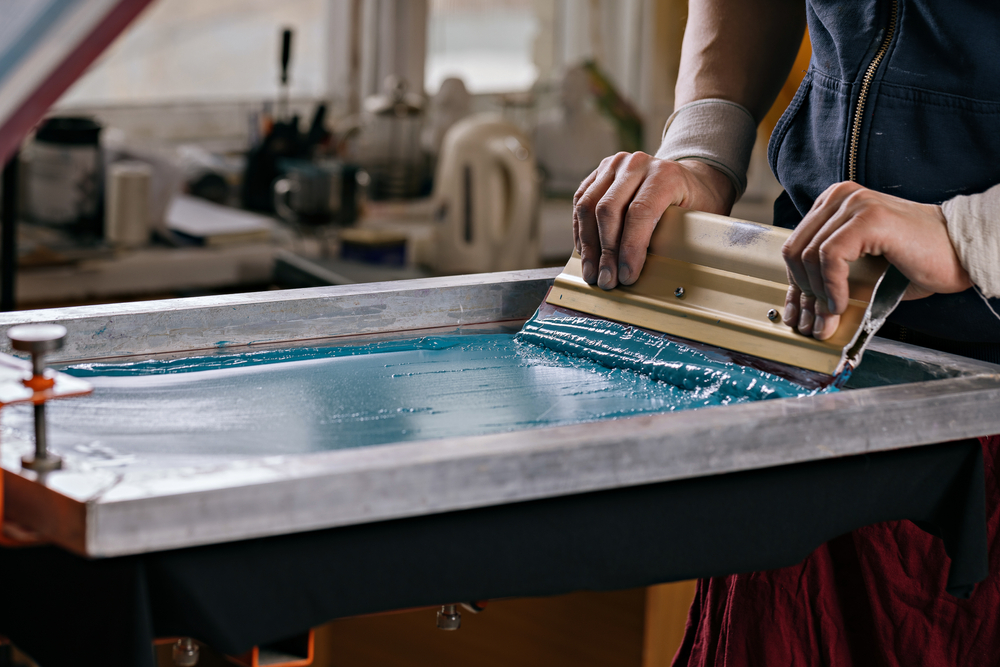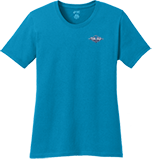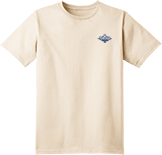The Evolution of Embroidery and Screen Printing: A Historical Overview

Posted by Naji Jr. on to Technical Guides
The Evolution of Embroidery and Screen Printing: A Historical Overview
From the intricate hand-stitched designs on ancient royal garments to the modern-day screen-printed T-shirts we wear, the journey of embroidery and screen printing is a fascinating tale of creativity, innovation, and cultural exchange. This comprehensive blog post dives deep into the evolution of these two influential textile arts, exploring their roots, transformations, and impact on today's fashion world.
1. The Ancient Threads of Embroidery
Embroidery, often hailed as the majestic canvas of the past, boasts a legacy that intertwines with the very fabric of human civilization.
a. Ancient Origins:
When we journey back in time, archaeological wonders such as the excavated frozen tombs of Siberia reveal detailed embroidered artifacts dating as far back as 30,000 B.C. These findings suggest that the early man, with limited resources, stitched patterns onto animal hides and furs. While these designs embellished their attire, the stitches also added durability, making them resistant to wear and tear.
b. Royal Tapestries and Sacred Symbols:
As civilizations evolved, so did the art of embroidery. Ancient Egypt, with its penchant for luxury and art, exhibited this craft on the robes of the Pharaohs. Threads spun from gold became symbols of divine connection and power. Similarly, ancient China, a land renowned for its silk route, nurtured the evolution of silk thread embroidery. Dynasties came and went, but each left an indelible mark on this craft, fine-tuning techniques that have been passed down generations. Persia, too, contributed to this saga, where embroidered artifacts became coveted trade commodities.
c. Middle Ages to the Renaissance:
The European continent, during the medieval ages, witnessed a surge in the popularity of embroidery. Monasteries and churches became the epicenters of this craft, with nuns and monks dedicating lifetimes to creating religious tapestries and vestments. The iconic Bayeux Tapestry, spanning a staggering 70 meters, intricately illustrates the events leading up to the Norman Conquest. It's not just an embroidered piece; it's a narrative, a chronicle, bearing witness to a pivotal moment in history.
2. The Dawn of Screen Printing
The allure of screen printing, or as some might recognize it, silk screening, is not just in its end product but also its rich and varied origins.
a. Early Beginnings in the Far East:
The genesis of screen printing can be attributed to the ancient Chinese dynasties. Around the 10th century, during the reign of the Song Dynasty, innovative artisans began the practice of using natural materials like human hair, woven together, to form stencils. This was then combined with a mesh made of silk to transfer ink onto fabrics, creating long-lasting designs. As with many other art forms, the technique migrated, making its way to Japan. Here, it amalgamated with traditional Japanese art forms, giving birth to unique designs and patterns.
b. 20th Century: A Modern Revolution:
The leap from Asia to Europe was inevitable. By the 18th century, screen printing found its footing in the Western world, primarily for decorating fabrics and wallpapers. However, it was the 20th century that truly marked a paradigm shift. The Pop Art movement, with its vibrant colors and bold designs, found an ally in screen printing. Legendary artists like Andy Warhol didn't just use the technique; they transformed it. His iconic "Marilyn Diptych" artwork, showcasing Marilyn Monroe, is a testament to how screen printing transcended its traditional boundaries to become a potent tool in modern art.
Both embroidery and screen printing, through the ages, have not only reflected the zeitgeist of their times but have also been instruments of storytelling, resistance, and artistry.
3. The Confluence of Tradition and Technology
In the tapestry of art and craft, the intersection of time-honored techniques with modern technology often results in masterpieces. Embroidery and screen printing are no exceptions, having beautifully adapted to the innovations of the industrial age and the digital era.
a. Machine Embroidery:
While hand embroidery boasts an unmatched depth and character, the evolution of embroidery machines during the late 19th century heralded a new era. These machines, armed with precision and speed, allowed for vast quantities of fabric to be embroidered in a fraction of the time. This industrial leap not only met the rising consumer demand but also opened doors for brands to stitch their identity, quite literally, onto garments with logos and intricate motifs. The digital age further streamlined the process, with computer-aided design (CAD) software ensuring the minutest detail was replicated flawlessly.
b. Digital Screen Printing:
The screen printing domain too experienced its renaissance in the twilight of the 20th century. Gone were the rudimentary methods. Enter digital screen printing presses equipped with high-resolution capabilities. Coupled with state-of-the-art design software, artists could now reimagine designs with a palette of countless colors. Moreover, the introduction of modern ink formulations ensured prints that were both vibrant and long-lasting.
4. Modern-Day Innovations and Trends
In a world where fashion and design evolve in the blink of an eye, embroidery and screen printing continue to be relevant, continually reshaping themselves in tune with contemporary trends.
a. Personalization & Customization:
Today's consumers seek unique, bespoke experiences. Recognizing this, brands have ventured into the realm of customization. Online platforms equipped with interactive design tools allow users to add personal touches to apparel. Whether it's an embroidered monogram on a luxury handbag or a screen-printed quote on a t-shirt, personalization is more than a trend; it's a statement.
b. Sustainable Practices:
The global call for sustainability has echoed through the corridors of fashion and design. Green is the new black. In the realm of screen printing, this manifests in the form of eco-friendly inks derived from sustainable sources and the use of organic fabrics that have minimal environmental impact. In the embroidery landscape, artisans are increasingly veering towards threads sourced sustainably, ensuring that the beauty of their craft also respects Mother Nature.
c. Fusion of Techniques:
Modern designers, always pushing boundaries, often blend the tactile elegance of embroidery with the visual brilliance of screen printing. Such hybrid designs marry texture with imagery, creating garments that are not just worn but experienced.
As search engines prioritize quality content, focusing on the rich history and modern evolution of embroidery and screen printing ensures this article remains both relevant and insightful for readers passionate about the marriage of tradition and innovation.
In Conclusion
From the intricate hand stitches of ancient civilizations to the digitally perfected designs of today, the intertwined journeys of embroidery and screen printing illuminate the rich tapestry of human innovation and aesthetic evolution. These two venerable arts have withstood the test of time, adapting and flourishing with every societal and technological shift. The profound histories of both embroidery and screen printing serve as vivid reminders of humanity's inexhaustible drive for artistic expression, cultural preservation, and the relentless pursuit of perfection.
As we stand at the confluence of tradition and technology, we witness how both art forms continue to tell our stories, capturing moments, emotions, and epochs. Each embroidered motif and every screen-printed design is not merely a decorative element but a chapter in our collective narrative. Thus, as we adorn ourselves with these pieces, we don't just wear art; we carry forward a legacy that binds generations, past, present, and future.
Categories
Recent Posts
- The Best Custom Polos for Workwear and Events
- The Most Popular Custom Hats for Every Occasion
- Why Choose a Mesh Back Hat?
- Exploring Backstrap Options: The Benefits and Drawbacks of Popular Hat Closures
- The Perfect Pair: Branded Bills Hats for Embroidery
- Trendy Camo Hats for the Outdoors: Customize the Richardson 111P with LogoUp
- The Ultimate Guide to Customizing the Richardson 320 Washed Chino Hat with Embroidery
- Embroidery on the Otto Cap 39-165: High-Performance Customization for Every Occasion
- LogoUp Holiday Gifts: Embroidered and DTF-Decorated Richardson 112, 112PFP, and 112PM
- Gifting LogoUp Custom Campfire Mugs: Thoughtful, Versatile, and Personalized















































































Add Comment